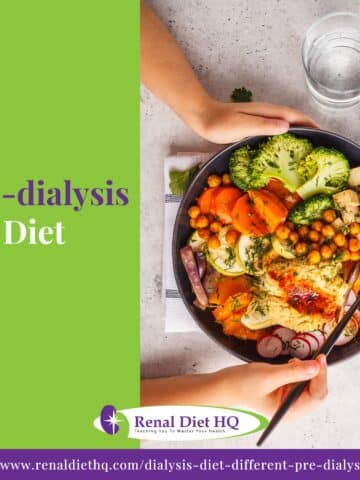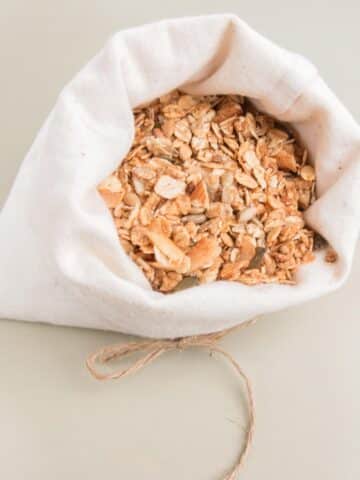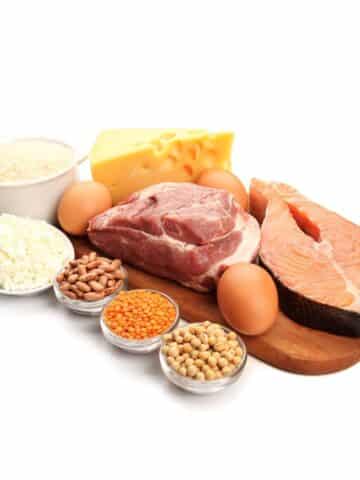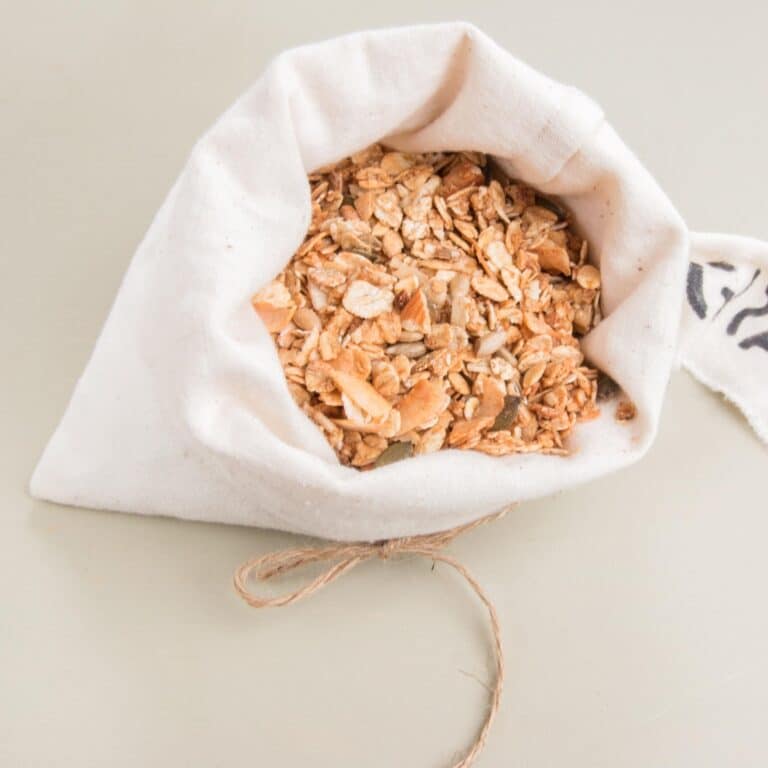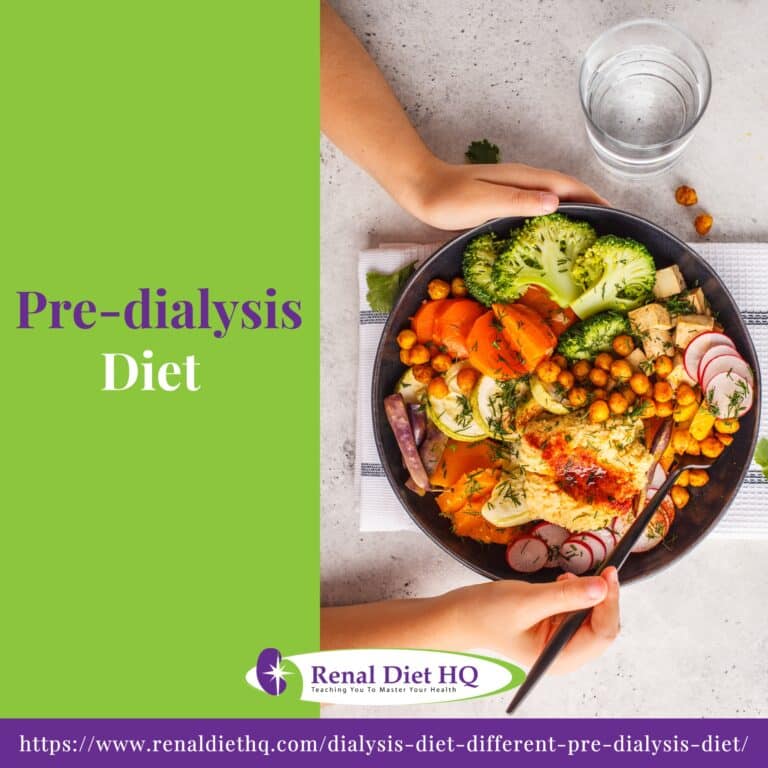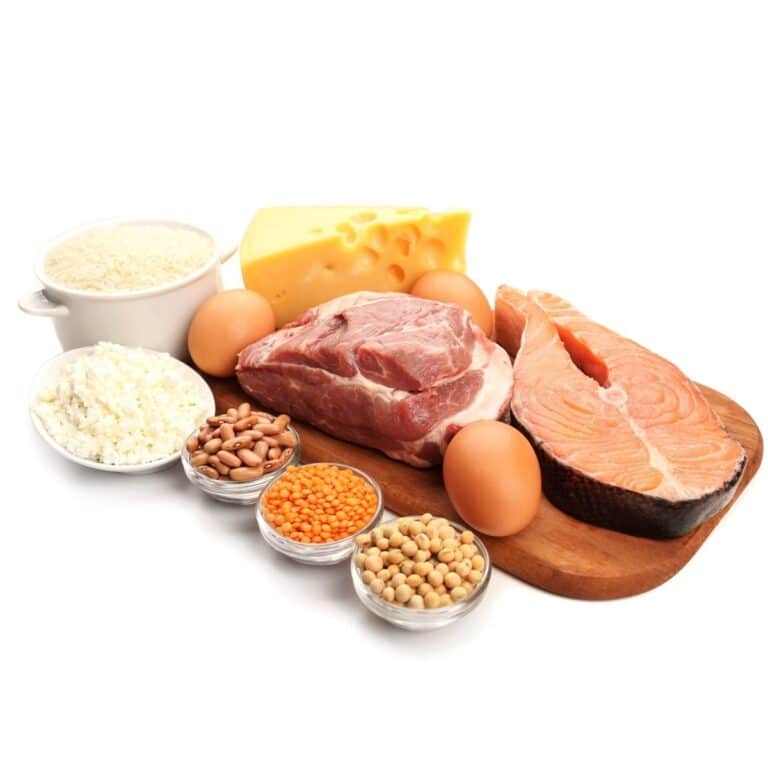Are Berries High In Potassium?
You may have heard that fruits are an excellent source of potassium. Potassium is a mineral essential for a number of bodily functions, including maintaining healthy blood pressure and muscle control.
However, for chronic kidney disease (CKD) patients, certain nutrients must be limited due to the loss of kidney function which makes it more difficult for the body to eliminate excess substances. Potassium is one of those nutrients that one should watch out for.
In this article, we'll explore how much potassium is in different types of berries, as well as other fruits and vegetables that are high in the mineral.
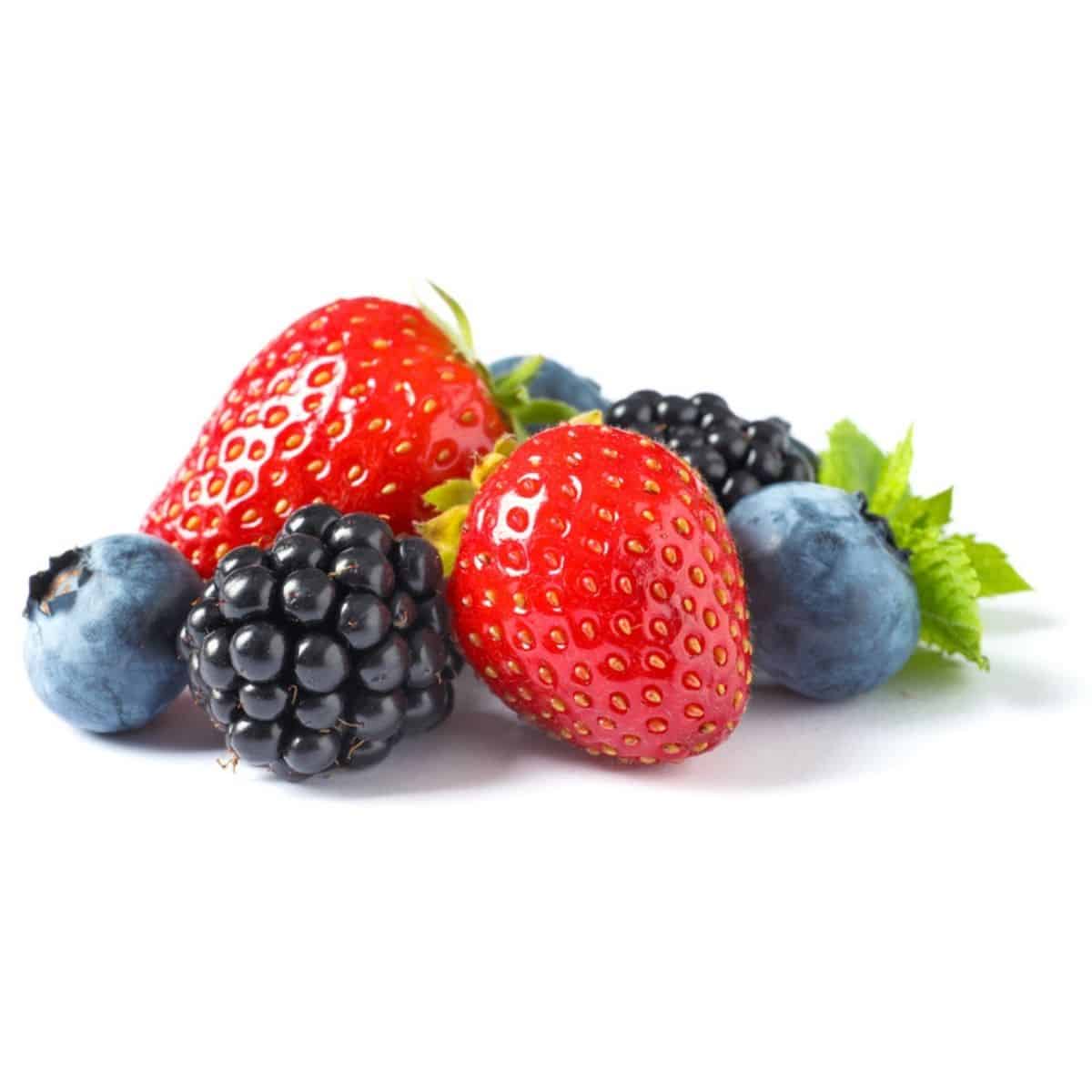
We'll also discuss serving size considerations and any restrictions you should take into account when planning your meals. With this information, you can make sure you're getting the right amount of potassium each day without going overboard if you have any limitations.
Jump to:
What is Potassium?
You need potassium to help your body function properly—it's an essential mineral! Potassium is an essential electrolyte that plays a crucial role in maintaining healthy bodily functions, such as regulating blood pressure and maintaining regular heartbeat.
It also helps the body absorb nutrients from food, process carbohydrates and proteins, and flush out toxins.
In addition, it's necessary for nerve transmission, muscle contraction, and bone formation. There are many foods that provide natural sources of potassium, including beans, dark leafy greens, nuts, avocados, yogurt, and fish.
Though our bodies need a certain amount of potassium to stay healthy and functioning correctly, too much can be dangerous for our health as it can cause problems with digestion or even abnormal heart rhythms. This is especially true in late stage chronic kidney disease.
You'll find that a low potassium diet for kidney disease is quite common!
For More Recipes and Ideas --->> Get Your Free Meals and Recipes That Are Perfect for Pre-Dialysis Diets, Pre-Dialysis with Diabetes, or Dialysis Diets.
Potassium and Health
Consuming foods rich in potassium can benefit your health. Potassium helps regulate fluid balance, muscle function, and heart health. Healthy snacks like fruits are packed with dietary sources of potassium that help satisfy cravings while also providing essential nutrients for the body.
Reducing salt intake and increasing potassium-rich foods has been linked with a decrease in the risk of high blood pressure. Most fruits contain antioxidants, which have been associated with improved heart health and cognitive functions that can further improve overall well being.
Eating a range of healthy snacks like fresh or frozen fruits is an easy way to ensure adequate levels of potassium to help maintain good physical health.
Potassium restriction, on the other hand, plays a significant role in the management of electrolyte balance in chronic kidney disease due to the kidneys' impaired ability to eliminate excess potassium from the body.
Elevated levels of potassium, known as hyperkalemia, can have serious health consequences, including cardiac arrhythmias and muscle weakness. Thus, limiting potassium intake is crucial to prevent complications and maintain overall health.
In renal disease, the kidneys may not efficiently excrete potassium, leading to its buildup in the blood. Dietary restrictions on high-potassium foods, such as bananas, oranges, tomatoes, potatoes, and certain vegetables, are commonly recommended to control potassium levels.
Additionally, avoiding or moderating the consumption of processed foods, which are often high in potassium additives, is essential.
A registered dietitian can provide personalized guidance on potassium restriction, taking into account an individual's specific needs, stage of CKD, and other dietary considerations. The dietitian may recommend cooking methods like boiling or soaking to reduce potassium content in certain foods.
Monitoring potassium levels through regular blood tests for chronic kidney disease is crucial for assessing the effectiveness of dietary potassium restriction. Medications called potassium binders may also be prescribed to help lower potassium levels by binding to it in the gastrointestinal tract.
Adhering to potassium restriction can help individuals with CKD maintain safe potassium levels and reduce the risk of complications. However, it is important to strike a balance, as excessively low potassium levels can also lead to health problems.
Therefore, working closely with healthcare providers and dietitians to establish a tailored potassium restriction plan is essential for optimal management of CKD.
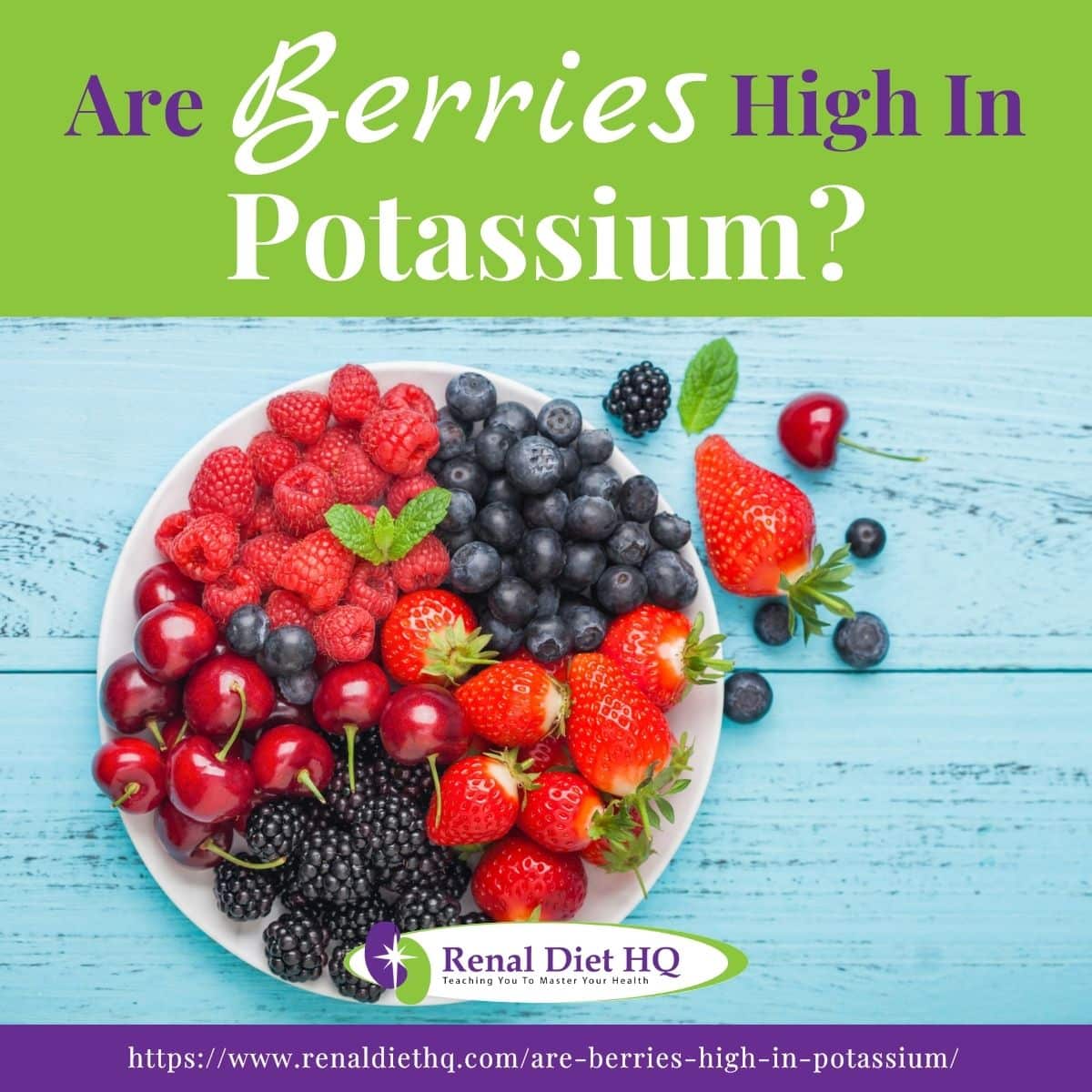
Fruits High in Potassium
Fruit is a delicious way to get your daily dose of potassium, with some varieties packing more than others. If you have potassium restrictions, it is also best to be aware of which fruits have high potassium so that they can be consumed sparingly or avoided entirely.
For patients with chronic kidney disease (CKD), it is crucial to limit the intake of high potassium fruits as part of their dietary management. High potassium fruits can potentially contribute to elevated levels of potassium in the blood, which can pose risks to individuals with impaired kidney function.
Fruits that are particularly high in potassium should be avoided or consumed sparingly by CKD patients include bananas, oranges, kiwis, avocados, and melons such as cantaloupe and honeydew.
These fruits, while nutritious and flavorful, contain significant amounts of potassium that may be challenging for the kidneys to process and eliminate efficiently.
The potassium content of fruits varies, and it is important for CKD patients to be aware of the specific potassium levels in the fruits they consume.
Working closely with a registered dietitian who specializes in kidney disease can provide personalized guidance on managing potassium intake and identifying suitable alternatives.
By avoiding high potassium fruits, CKD patients can help maintain their potassium levels within a safe range and reduce the risk of complications associated with hyperkalemia.
Adhering to a well-balanced, kidney-friendly diet is essential in supporting overall kidney health and managing potassium levels effectively.
Low Potassium Fruits
When it comes to managing potassium levels in people with chronic kidney disease, incorporating low potassium fruits into their diet can be a beneficial strategy. One group of fruits that CKD patients can safely enjoy is berries. Berries are not only delicious but also generally lower in potassium compared to other fruits.
Here are some examples of berries and their respective potassium content per ½ cup (125 mL) serving:
- Blueberries: 56 mg
- Cranberries: 67 mg
- Raspberries: 94 mg
- Blackberries: 117 mg
- Strawberries: 127 mg
As seen in the list, these berries have moderate to low potassium levels, making them suitable for inclusion in a CKD diet. They provide a burst of flavor and are packed with essential nutrients such as antioxidants, fiber, and vitamins.
By incorporating low potassium berries like blueberries, cranberries, and raspberries into their diet, CKD patients can enjoy the benefits of these fruits while minimizing their potassium intake. These berries can be consumed fresh, added to smoothies, or used as toppings for cereals, yogurt, or salads.
It is important to note that individual potassium needs may vary depending on the stages of chronic kidney disease and the recommendations from healthcare professionals. Monitoring potassium levels through regular blood tests is essential to ensure optimal management.
In addition to berries, other low potassium fruits that can be included in a CKD diet include applesauce, grape juice, canned pears, and lemon. These fruits offer a variety of flavors and can be enjoyed in different forms, such as raw, cooked, or as part of recipes.
Remember, a well-balanced diet tailored to individual needs is crucial for managing CKD. Consulting with a registered dietitian specializing in kidney disease can provide personalized guidance and help create a meal plan that incorporates low potassium fruits, supporting overall kidney health and nutritional well-being.
Are Blueberries High In Potassium?
Do blueberries have potassium? Blueberries are considered low in potassium, making them suitable for individuals monitoring their potassium intake, such as those with chronic kidney disease. A one-cup serving of blueberries contains approximately 114 milligrams of potassium. This low potassium content allows blueberries to be enjoyed in various diets without significantly impacting daily potassium levels.
Are Strawberries High In Potassium?
Strawberries are considered a low-to-moderate potassium fruit, making them a kidney-friendly choice in appropriate portions. One cup of fresh strawberries contains about 233 milligrams of potassium, which is lower than high-potassium fruits like bananas or oranges. Because of their moderate potassium content, strawberries can typically be included in a renal diet, but portion control is important for those closely monitoring their potassium intake.
Vegetables High in Potassium
When managing chronic kidney disease (CKD), it is essential for patients to be aware of the potassium content in their diet. Vegetables, known for their nutritional value, can vary in potassium levels.
Here are some vegetables that CKD patients should be mindful of due to their higher potassium content:
High-potassium vegetables (more than 200 mg per serving) include
- Baked potatoes with skin (925 mg)
- Baked sweet potatoes with skin (450 mg)
- Tomato or vegetable juice (275 mg), mushrooms (280 mg)
- Brussels sprouts (250 mg)
- Cooked zucchini or winter squash (220-250 mg)
- Avocados (245 mg).
While these vegetables offer various health benefits, their high potassium content may not be suitable for individuals with CKD, especially those with elevated potassium levels.
Medium-potassium vegetables (50 to 200 mg per serving) include corn (195 mg), fresh or cooked carrots (180 mg), fresh cauliflower (150 mg), asparagus (155 mg), canned peas (90 mg), lettuce (100 mg), green beans (90-85 mg), and cucumbers (80 mg).
These vegetables contain less potassium than the high-potassium ones and can be consumed in moderation by CKD patients. If you'd like more information, you can check out this cookbook for CKD patients.
It is crucial for CKD patients to work closely with a registered dietitian to develop a personalized meal plan that meets their individual needs. The dietitian can help identify suitable portion sizes and advise on the frequency of consuming vegetables with higher potassium content.
Regular monitoring of potassium levels through blood tests is essential to ensure that potassium intake aligns with the patient's specific requirements.
How is chronic kidney disease diagnosed? Controlling potassium intake is important in managing CKD. By understanding the potassium content of different vegetables and incorporating them into a well-balanced diet, CKD patients can support their kidney health and overall well-being.
Low Potassium Vegetables
If you're looking to reduce your potassium intake without giving up on vegetables, there are plenty of delicious low-potassium choices out there! The following list details some of the best options for those who want to reduce their potassium levels on a low potassium diet.
Celery
This crunchy snack is a great way to substitute salt in your diet while still maintaining balance. It's high in fiber and can help improve digestion. You can also learn how to season food without salt but celery is a nice snack!
Cabbage
Cabbage is a nutrient-rich vegetable that helps influence metabolism and weight loss. Its low-potassium content makes it an ideal choice for individuals with heart failure or kidney disease.
Radish
A great source of vitamin C, radishes are also known for their anti-inflammatory properties. They are low in calories and have a mild flavor that pairs well with other foods.
Mushrooms
Packed with antioxidants, mushrooms are an excellent low-potassium option for those seeking to reduce their intake without sacrificing flavor or texture.
Low potassium vegetables provide essential nutrients for overall health and wellness while still being mindful of dietary restrictions. Eating these vegetables can be part of any balanced diet and they offer numerous benefits such as improved digestion, increased fiber, influencing metabolism and more.
Whether you're trying to cut back on sodium or other minerals like potassium, incorporating some of these delicious vegetables into your meals is an easy way to make sure you're getting all the nutrition your body needs while staying within your dietary goals.
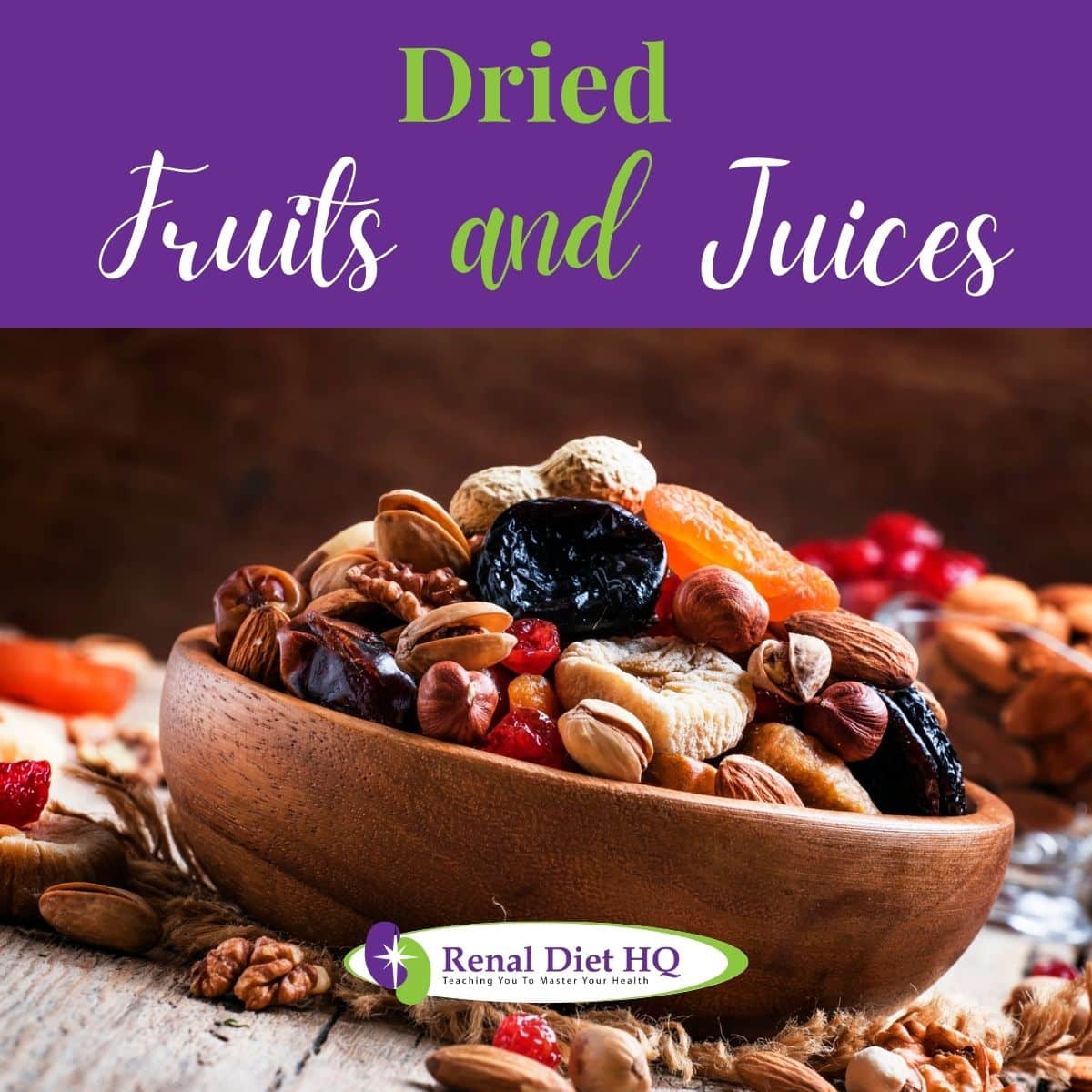
Dried Fruits and Juices
For those looking to reduce their potassium intake, dried fruits and juices offer a delicious alternative. Berries and greek yogurt for ckd patients make for a great snack that is low in potassium while still providing essential nutrients.
Those who prefer canned fruits can opt for peaches, pears or pineapple as they all contain less than 100 mg of potassium per serving.
Fruit juices are also a good option with one cup of grape juice containing only 140 mg of potassium. Smoothies and shakes are another way to get creative with your food while keeping the amount of potassium low; using almond milk instead of cow's milk will further reduce the amount of potassium you consume per serving.
Finally, dehydrated fruits such as apples, bananas and apricots are perfect for adding extra flavor without increasing your daily intake of potassium.
| Fruit | Potassium (mg) per Serving |
| Berries & Yogurt | 40 |
| Canned Fruits | <100 |
| Fruit Juices | 140-170 |
| Smoothies/Shakes | 150-200 (using Almond Milk) |
| Dehydrated Fruits | 80-90 (per ¼ cup) |
With so many options available it is easy to find substitutes for foods that may be high in potassium while still getting the necessary nutrients our bodies need on a daily basis.
No matter what combination you choose, making sure to keep an eye on your daily intake of potassium will help ensure your diet remains balanced and healthy in the long run.
Serving Size Considerations
When managing your daily potassium intake, it is crucial to pay attention to serving sizes of foods, especially those that are known to be high in potassium.
Serving size considerations play a significant role in maintaining a balanced diet while effectively managing conditions such as chronic kidney disease.
Foods that are rich in potassium, such as certain fruits, vegetables, and legumes, can be beneficial for overall health, but portion control is important to avoid consuming excessive amounts of potassium.
It is recommended to follow the serving size guidelines provided on food labels or consult with a registered dietitian to determine appropriate portion sizes for your specific needs. Understanding portion control for CKD patients is just a matter of studying what's necessary.
For example, a medium baked potato with skin contains approximately 925 mg of potassium, which is considered a high amount for individuals with CKD.
However, by reducing the portion size to a small baked potato or half of a medium-sized potato, you can significantly lower your potassium intake.
Similarly, with fruits and vegetables, such as tomatoes, carrots, or avocados, monitoring the serving sizes becomes crucial. For instance, a medium raw tomato contains around 290 mg of potassium, but consuming a smaller portion, like half of a medium tomato, can help reduce your potassium intake while still enjoying the nutritional benefits.
It is important to note that the serving sizes and potassium content mentioned here are general guidelines, and individual needs may vary depending on the severity of CKD and other health factors.
Consulting with a registered dietitian who specializes in kidney health can provide personalized guidance on appropriate serving sizes to meet your specific dietary requirements.
By being mindful of serving sizes, you can effectively manage your daily potassium intake and support the health of your kidneys. Remember to always consult with a healthcare professional or registered dietitian for personalized advice tailored to your condition.
Potassium Restrictions
Consuming too much potassium can be detrimental to people with kidney disease, so it's important to be aware of any restrictions that may apply.
Generally, it is recommended to keep potassium intake for adults with CKD within less than 3.0 grams per day. However, individual limits may vary, so it’s best to consult your doctor for personalized guidelines.
Dairy sources such as yogurt and milk are usually high in potassium, while canned foods like vegetables and fruits can contain added salt or sodium chloride, as well as potassium additives.
Fast food options and processed foods may also contain a lot of potassium from salt substitutes or artificial sweeteners. There are fast foods that are okay for kidney disease.
It's best to check the nutritional label before purchasing these items, to ensure that they're low in potassium content.
When looking for servings with low amounts of potassium, it's important to limit dairy products and processed food items. Fruits like berries have lower levels of potassium than other fruits but still provide great nutrition value.
However, when consuming any type or form of berry, it's important to look at the labels on canned fruit products - some brands may have added sugar or other ingredients that could elevate the amount of potassium present in the product.
Are Berries High in Potassium? FAQs
Yes, elderberries are an exception among berries as they have a relatively higher potassium content. Elderberries contain approximately 280 mg of potassium per cup, which is considered relatively high compared to other types of berries.
While most berries tend to have lower potassium levels, elderberries stand out with their higher potassium content. It's important to note that elderberries are often consumed in processed forms, such as in jams, syrups, or supplements, rather than fresh.
If you have specific dietary restrictions or need to closely monitor your potassium intake, it is advisable to consult with a healthcare professional or registered dietitian for personalized guidance.
In addition to being low in potassium, berries offer a range of health benefits. Berries are rich in antioxidants, which help protect the body from oxidative stress and reduce inflammation.
They are also packed with vitamins, minerals, and dietary fiber that support overall health. Regular consumption of berries has been associated with improved heart health, enhanced brain function, and a reduced risk of chronic diseases such as diabetes and certain cancers.
Additionally, the high levels of phytochemicals found in berries contribute to their potential anti-inflammatory and immune-boosting properties. Including a variety of berries in your diet can be a delicious way to enjoy these health benefits and support your overall well-being.
There are several kidney-friendly recipes for snacks and kidney-friendly recipes for dinner that incorporate the goodness of berries.
One option is to make a kidney-friendly smoothie by blending low-potassium fruits like berries with non-dairy milk and a low-potassium protein source like tofu or hemp seeds.
.
Another idea is to create a kidney-friendly salad by combining mixed greens, low-potassium vegetables, and a handful of berries. You can also make a kidney-friendly chia seed pudding by soaking chia seeds in almond milk and adding berries as a topping.
For a refreshing treat, try making kidney-friendly berry popsicles using low-potassium fruit juice and chopped berries.
These recipes provide a delicious way to enjoy the benefits of berries while being mindful of their potassium content and are suitable for individuals with kidney health concerns.
Yes, there are berries that are both low in potassium and in sugar. One example is strawberries, which are relatively low in both potassium and sugar content. A ½ cup serving of strawberries contains about 120 mg of potassium and approximately 3-4 grams of sugar.
Another option is blackberries, which are also relatively low in potassium and have a moderate sugar content. Including these berries in your diet allows you to enjoy their delightful taste and nutritional benefits without significantly impacting your potassium or sugar intake.
As always, it's important to consider your individual dietary needs and consult with a healthcare professional or registered dietitian for personalized guidance.
Berries Just Might Be Very Good For You
Managing potassium intake is crucial for individuals with chronic kidney disease to maintain optimal health. While fruits and vegetables are generally high in potassium, it is important to be aware of the specific potassium levels in different types of foods.
Berries, such as blueberries, cranberries, and raspberries, are low in potassium and can be safely included in a CKD diet. You can even make delicious recipes, like this recipe for Blueberry Muffins for renal disease.
On the other hand, high-potassium fruits like bananas and avocados should be consumed sparingly or avoided entirely. Similarly, some vegetables, such as potatoes and tomatoes, have high potassium content and should be limited.
Working with a registered dietitian can provide personalized guidance to manage potassium intake and maintain overall kidney health. Monitoring potassium levels through regular blood tests is essential to ensure the effectiveness of dietary potassium restriction.
By following a well-balanced diet and being mindful of serving sizes, individuals with CKD can support their kidney health and overall well-being.

